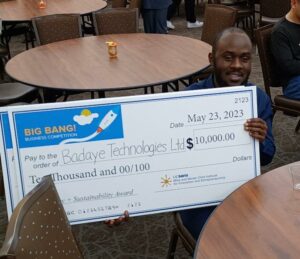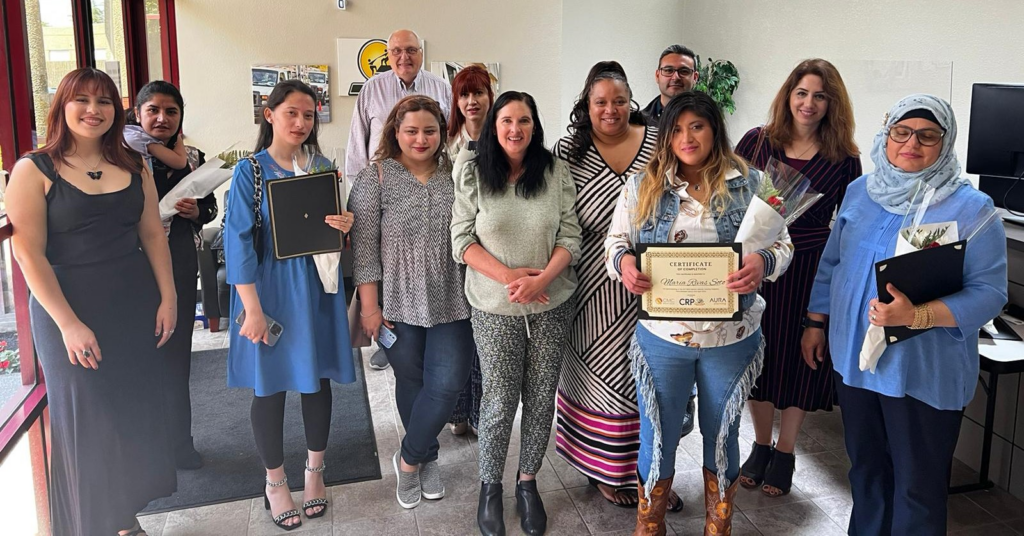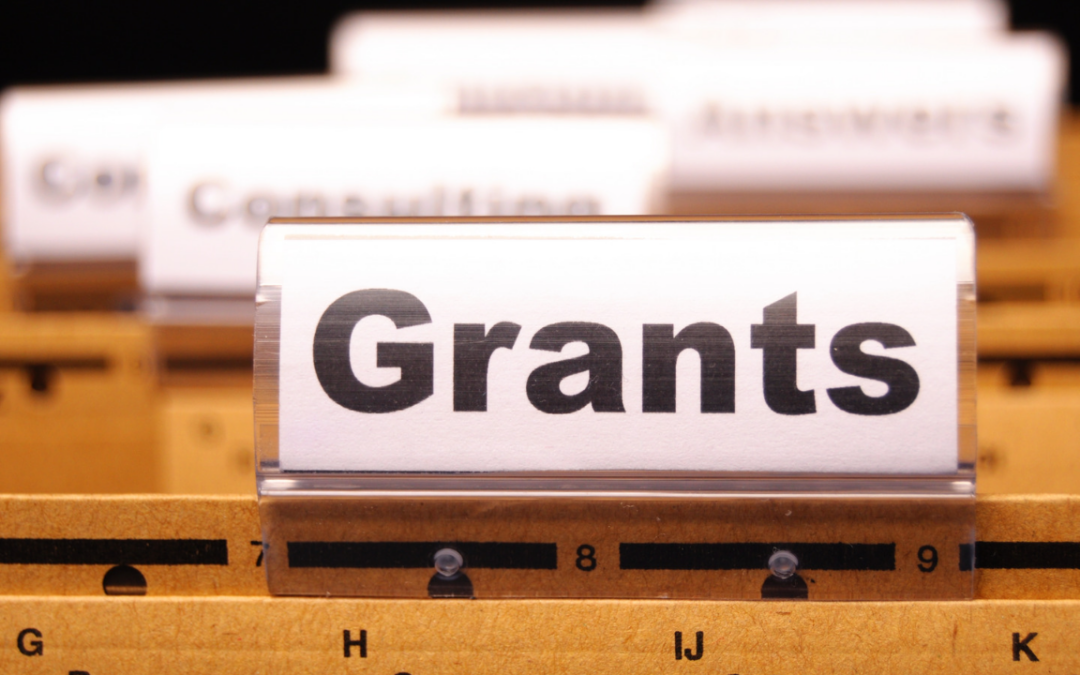
Microgrid Development: A Hot Topic
At our in-person MeetUp at the California Mobility Center in the evening of June 1, we brought up one of the hottest topics in clean tech—microgrids. The discussion was not disappointing. We have had three prior discussions on the spread and benefits of microgrids, so this was more of an update on the state of play.
California has been slow in adopting microgrids, due to the perceived problems in harmonizing their operation with overall grid operations. Customers clearly see benefits in terms of lower costs and better reliability, but the utilities want to be sure there are public benefits as well.
Allie DeTrio, Chief Strategist for ReImagine Power, and Senior Advisor for the nationwide Microgrid Resources Coalition, provided the proponents’ views, while Patrick McCoy, a strategic business planner from SMUD, described why utilities are being cautious. The problem boils down to having enough control of the microgrids to make them assets to the larger system rather than a source of concern. But control requires investment in sensors, switches, communication and software that can be expensive and at this stage might be too rudimentary to work well.
Patrick noted that control is easier and cheaper if there is a big power source that is set up to be harnessed within the microgrid. Back east that source is often a diesel or microturbine generator, usually running on natural gas. In his view, that accounts for the more rapid pace of deployment of microgrids there. In California, in contrast, statutory and regulatory policy requires avoiding the use of such generators. Instead, the most likely substitute is a large battery storage system or extensive load controls to achieve the same thing—or both. But that’s a costly alternative and one not completely proven. The audience raised the point about using EVs connected to a two-way charger as part of the solution, since those batteries would not need to be purchased just for the microgrid.
The proponents counter that the utility is not paying microgrids enough for all the services they can provide the grid and that some courage in proceeding to demonstration projects could resolve the debate.
Fortunately, it looks like California will see some of those demos. SMUD will be doing some pilot projects this summer, paying a $2500 incentive up front along with performance payments for the services provided. Under a CPUC rule, the investor-owned utilities will be offering a different version of a “Microgrid Incentive Program”. The program rules adopted in April for the MIP establish a $200 million program previously authorized by the CPUC to support the development of community microgrids in disadvantaged and vulnerable communities, as well as tribal communities, who have experienced and are likely to experience power outages. It allocates $79.2 million for PG&E, $83.3 million for SCE, and $17.5 million for SDG&E to build complex projects that can operate independently for extended periods and serve multiple customers in disadvantaged and vulnerable communities. Projects selected under the MIP can receive up to $15 million in award funding. The Decision aims to advance microgrid resiliency technology, distribute the benefits of microgrids equitably across these vulnerable communities, and provide insights for future actions that can enhance the resilience of the power system to benefit all customers.
Those programs should be a flag for innovators out there to craft business ideas to take advantage of the incentives both now and in the future. Money is on the way. Policy is aligned to promote microgrids. What ideas do you have to make microgrids more attractive that could be a business?
This topic will be with us for a long time. Don’t miss the next installment as we return to the subject in 2024.

Badaye: Winner of the Big Bang Clean Energy + Sustainability Prize
At the finals of the UCD Big Bang competition on May 23, Badaye Technologies won both the Clean Energy + Sustainability prize, and the Food + Ag prize, scooping up a total of $20,000.

CEO Ismael Mayanja came up with a simple, inexpensive device to process hand-harvested corn in Africa and efficiently remove waste chaff. Their flagship product (SUNSULA) efficiently cleans maize in seconds and produces quality grain for safe and longer storage, easy processing into other foods, and healthy consumption. The conventional method is to winnow the grain by hand, which leaves a lot of chaff in the product and lowers its value. You can watch an animation of the product in action here.


Women Graduates of EV Job Training Program
Key points:
- The Community Resource Project’s board of directors meeting was interrupted by a celebration for 15 women who completed electric vehicle job training, including immigrants and those seeking new career paths.
- The pilot program, funded by the California Energy Commission, aims to train nearly 100 Sacramento area residents, with a focus on immigrants, women, and youth from traditionally underserved communities.
- The training program involves classroom learning with virtual reality headsets followed by hands-on experience with smaller remote vehicles, with the goal of empowering participants to start their own businesses and contribute to the green tech solution for climate change.
A recent meeting of the Community Resource Project’s Board of Directors was interrupted by a little child dancing, smiling, and handing out diplomas as the 15 women who recently completed electric vehicle job training were congratulated.
Unique Pilot Program Targets Underserved Communities
The unique pilot program, funded by the California Energy Commission, is set to train nearly 100 Sacramento area residents to work with electric vehicles. The program aims to benefit traditionally underserved communities with focused recruiting of immigrants, women, and youth for class groupings that target specific groups for focused attention.
The first graduating class was populated with immigrants from Afghanistan and Ukraine. The Women’s Cohort is the second to graduate. The 15 graduates included immigrants, two mother-and-daughter pairs, and other women seeking a new career path.
After four weeks of learning in a classroom with virtual reality headsets, the class moved to hands-on learning at the California Mobility Center. Rather than jumping straight to full-sized vehicles, the class started with smaller remote vehicles.
Positive Testimonials Highlight Program’s Impact
“I learned more about cars or vehicles than I could have ever fathomed from participating in this program. I learned how to put together a remote control car by assembling all of the parts,” wrote program participant Degrata Brown. “It was amazing to build something from scratch and see it become powered by an electric battery. I began to understand that we were working with something unseen or invisible, and that is energy. To me, understanding that component was incredible.”

Two additional class groups, each with about 20 students, are currently meeting. The fifth and last scheduled class group is set to start on June 19.
Organizers said it is important to recognize the accomplishments of program graduates at the late May Community Resource Project meeting.
“It was exciting to watch the participants celebrate their accomplishments,” said Gary Simon, chairman and founder of Clean Start. The hope is that the program will lead to real-life change for participants.

ABOUT THE AUTHOR
Ed Fletcher is a seasoned journalist with over two decades of experience in the industry. He served as a Senior Writer for The Sacramento Bee, covering local news and events in the Sacramento area.
CleanStart Sponsors
Weintraub | Tobin, BlueTech Valley, Revrnt, River City Bank
Moss Adams, PowerSoft.biz, Greenberg Traurig, California Mobility Center

Beyond Venture Capital
While private funding from venture capitalists and angel investors becomes increasingly scarce, entrepreneurs should not be disheartened. There are numerous avenues for non-dilutive funding that business founders can explore. A variety of grant programs are available, offering significant financial support to grow businesses without the need to give up equity. These programs provide the much-needed capital infusion that can help startups thrive in their formative years and beyond.
Exploring Grant Programs for Startups
Looking for a grant. The California Air Resources Board (CARB) offers a tool called the Funding Wizard to streamline the process of applying for grants for sustainability projects. Originally developed to encourage more applications for funds from the sale of cap-and-trade offsets, the tool has expanded to include a database of funding opportunities from local, state, and air quality agencies, as well as power utilities. The tool, which is continuously updated and improved, also offers modules to help calculate carbon footprint reductions and build solid project plans. Despite being focused on opportunities in California, it can be used widely if a connection to the state can be established.
There is also OpenGrants. OpenGrants is working to help companies find the right contacts in granting agencies and begin building positive relationships. OpenGrants offers a basic “freemium” service that will develop a profile of those seeking grants and matching them through an extensive database to what might be good candidates to approach. The idea is to offer a “no-regrets” entry point to encourage people to give OpenGrants a try.
The CalNEXT initiative is open again, looking to accelerate the development of emerging technologies that contribute to California’s decarbonization efforts. Managed by Energy Solutions, CalNEXT is funded by ratepayers of investor-owned utilities in the state. The initiative funds projects ranging from $20-400K, providing opportunities for energy-efficiency innovators to focus on impactful and marketable ideas. CalNEXT operates through “Technology Priority Maps” that detail desirable innovations across six technology groups. CalNEXT also assists in connecting companies to stakeholders that can further support demos and commercialization opportunities after project completion.
Highlighting Startup Grants
The Business journal recently highlighted grants for startups in general.
Visa Everywhere Initiative: Startups can win up to $70,000 at the TechCrunch Disrupt event. The North American region winner competes against global startups for an additional $50,000. Deadline: June 26, 2023.
Venmo Small Business Grant: Offers $10,000, professional consulting services, and promotional opportunities. Application deadline not yet announced.
WomensNet’s Grants: Provides several grants, including a monthly $10,000 Amber Grant and a quarterly Startup Grant for businesses with less than $10,000 in revenue. Deadlines: Amber grants are monthly, Startup Grants are quarterly.
U.S. Chamber of Commerce’s Top Small Business Awards: Offers a $25,000 cash prize for startups with fewer than 250 employees or gross revenues of less than $20 million. Deadline: July 7, 2023.
LegalZoom’s Fast Break for Small Business: In partnership with the NBA, WNBA, and NBA G League, offers $10,000

